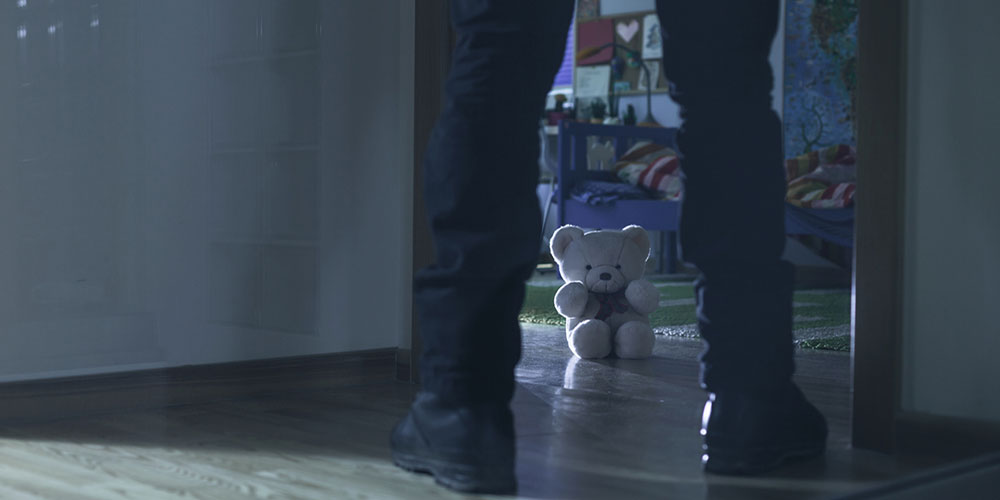In Part 1 of Campus Safety‘s series on child sexual abuse, we covered general statistics surrounding child sexual abuse, children who are at risk, signs of sexual abuse and the possible long-term effects.
In this second part of our four-part series, we’ll address perpetrators of sexual abuse and how to spot the predatory behaviors they often exhibit.
In Parts 3 and 4, we’ll discuss how to report suspected child abuse, how to help students who have been sexually abused, and how your campus can implement prevention methods to protect students from sexual abuse.
Who Are the Perpetrators of Child Sexual Abuse?
It is estimated that an overwhelming 88% of perpetrators of child sexual abuse are male. However, women are the abusers in around 14% of cases reported among boys and 6% of cases reported among girls.1
Additionally, of the sexual abuse cases reported to Child Protective Services (CPS) in 2013, 47,000 alleged perpetrators were men and 5,000 were women.
Although many would like to believe child sexual abuse is typically committed by a stranger, approximately 93% of children who are victims of sexual abuse know their abuser. See the breakdown of that percentage in the below chart from the Rape, Abuse & Incest National Network (RAINN).

Here are some additional statistics surrounding perpetrators:
- Out of the sexual abuse cases substantiated by CPS in 20161:
- 80% of perpetrators were a parent
- 6% were other relatives
- 4% were unmarried partners of a parent
- The younger the victim, the more likely the abuser is a family member2
- Family members account for 50% of those sexually abusing children under the age of six
- Family members account for 23% of those abusing children ages 12-17
- 60% of sexually abused children are abused by people the family trusts3
- Most child sexual abuse occurs in residences of either the victim or the perpetrator: 84% for children under 12 and 71% for children ages 12-172
- The younger the victim, the more likely the perpetrator is a juvenile2
- Juveniles are the perpetrators in 43% of assaults on children under the age of 6
- Of these perpetrators, 14% are under the age of 12
- It is estimated that 40-80% of juvenile sex offenders have been victims of sexual abuse themselves
- Nearly 40% of children who are sexually abused are abused by older or more powerful children
- Juveniles are the perpetrators in 43% of assaults on children under the age of 6
What Behaviors Do Perpetrators Exhibit?
As we discussed in Part 1, child sexual abuse perpetrators choose their victims very carefully. They will look for vulnerable children, such as those who are passive or quiet, and often use their authoritative power to prey on the trust of both children and their families.
“The offender is someone you know and trust, so very often they are showing the child what a child needs and deserves: attention, affection, making them feel very special, making it seem as though the offender cares about them and loves them,” Cordelia Anderson, former president of the National Coalition to Prevent Child Sexual Abuse and Exploitation, told Campus Safety. “It often includes touch that begins perfectly appropriately and changes to something that begins to violate boundaries and then is sexually exploitive.”
This process of manipulation is called grooming.
Darkness to Light, a non-profit organization dedicated to ending child sexual abuse, defines grooming as the process by which an offender gradually draws a victim into a sexual relationship and maintains that relationship in secrecy.
“We encourage people to watch for too much attention [toward a child] from an adult in a position of authority or caring adult: expensive gifts, alone time, physical and emotional boundary issues,” added Anderson.
Perhaps one of the most well-known cases of grooming involves former Penn State football coach Jerry Sandusky.
In 2011, Sandusky was arrested and charged with 52 counts of sexual abuse of 10 young boys from 1994 to 2009. Prosecutors said Sandusky met his victims through The Second Mile Foundation, a charity he founded in 1977 for at-risk youth, according to The Post-Gazette.
“Through The Second Mile, Sandusky had access to hundreds of boys, many of whom were vulnerable due to their social situations,” said a grand jury presentment.
It was common for the boys to stay over at the Sandusky household and attend Penn State football games with him. Victims said it was in Sandusky’s basement that he would provoke sexual encounters with them.
Some of the victims testified against Sandusky in his 2012 trial. He was sentenced to 30 to 60 years in prison — likely a life-sentence for the now 75-year-old man who still maintains his innocence.
Perpetrators also often treat the child as if he or she is older and gradually cross physical boundaries that become increasingly intimate and sexual. Predators will often show pornography to their victims to arouse them or make them believe the things they want them to do are okay because other people are doing it.
It can even advance to children taking photographs of themselves, which can be later used as blackmail. Perpetrators will also often threaten to harm a family member, friend or pet in order to silence a victim and maintain control.













